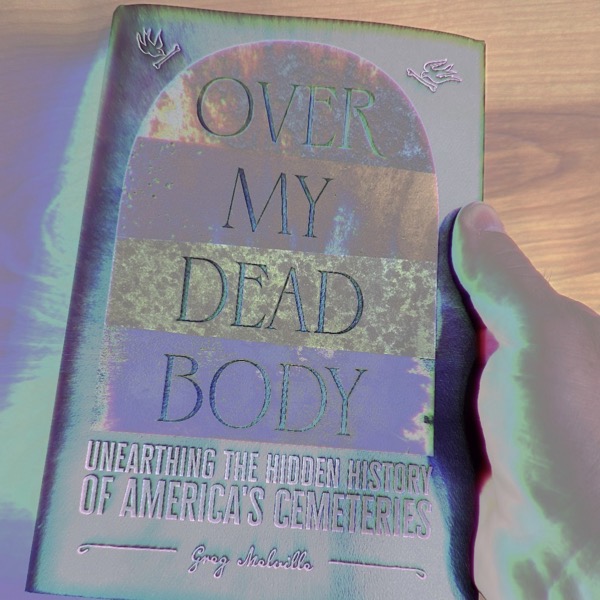Book Review: Over My Dead Body
This 2022 book by Greg Melville is subtitled “Unearthing the Hidden History of America’s Cemeteries.” It’s both a travelogue and a history of burial practices. Overall, it provides a fascinating look into the culture and the American-style business of corpse disposal and, if you’ll pardon the expression, it really tickled my sociology bone. It’s also a beautifully designed book with a handful of nice photos, many from the author. Before digging into the details, suffice to say, I enjoyed and recommend it.

I learned a lot from this book, and there are too many salient points for me to list here, but this sample should give you a flavor of what stood out for me:
- The practice of burying a body “six feet under” arose during the plague as an attempt to prevent animals from digging up the bodies and further spreading the disease.
- While the Donner Party gets all the scorn for cannibalism, the settlers at Jamestown also ate their mates.
- Speaking of pilgrims, the corn that got them through the harsh winter was largely stolen from Native American graves, where it was buried for use by the deceased in the afterlife.
- By tradition, bodies are buried with their feet facing East so that they can stand and face Jesus when he returns.
- It was (and remains) common practice for cemeteries to seek celebrity bodies in order to increase sales of nearby plots. Daniel Boone, for example, was disinterred and moved for promotional purposes. Moreover, Arlington National Cemetery wasn’t nearly so popular until Kennedy was buried there.
- Mausolus, an ancient leader of what is now Turkey, was buried in an ostentatious tomb and that is where the word mausoleum comes from.
- An obelisk at Green-Wood cemetery (Brooklyn, NY) is inscribed “Here Lie the Secrets of the Visitors.” It features a slot where people can slip written confessions inside, which are emptied and burned regularly.
- Modern US-style embalming was popularized by the actions of Abraham Lincoln, who had the new technology applied to Colonel Elmer Ellsworth, the first Union officer killed in the Civil War. Ellsworth’s body was preserved, so it could be taken on tour to Northern cities as a fundraiser to pay for the war. (10,000 people came to see it in Manhattan.) And yes, there is a US-style of embalming to this day.
- The magazine Ladies Home Journal coined “living room” to describe a home’s parlor, after the practice of displaying the dead in their house stopped being common.
- Despite the hundreds of thousands of Chinese immigrants who built the country, there are very few of their dead (still) buried in the United States. That’s because their remains were disinterred and recovered by the Chinese government.
Those of you who know me or follow this blog won’t be too surprised at my enthusiasm for this book, as evidenced in A Cat at Begraafplaats Huis de Vraag , my review of Grave Plots, and my delight over a book of Cemetery Maps.
I bought my copy of Over My Dead Body at Quimby’s in Chicago, but you can also uncover one by searching on the Amazon.